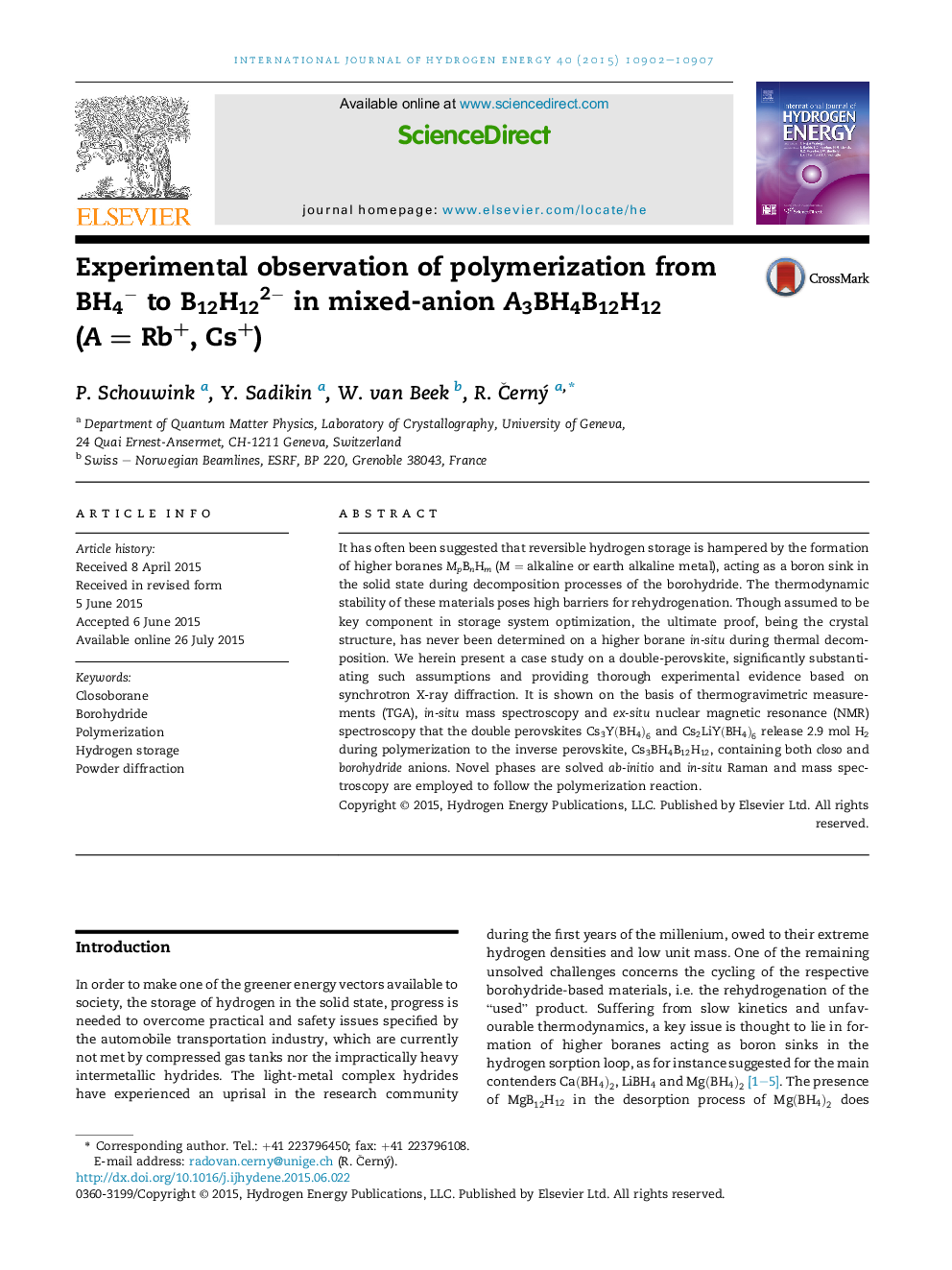| Article ID | Journal | Published Year | Pages | File Type |
|---|---|---|---|---|
| 7714567 | International Journal of Hydrogen Energy | 2015 | 6 Pages |
Abstract
It has often been suggested that reversible hydrogen storage is hampered by the formation of higher boranes MpBnHm (MÂ =Â alkaline or earth alkaline metal), acting as a boron sink in the solid state during decomposition processes of the borohydride. The thermodynamic stability of these materials poses high barriers for rehydrogenation. Though assumed to be key component in storage system optimization, the ultimate proof, being the crystal structure, has never been determined on a higher borane in-situ during thermal decomposition. We herein present a case study on a double-perovskite, significantly substantiating such assumptions and providing thorough experimental evidence based on synchrotron X-ray diffraction. It is shown on the basis of thermogravimetric measurements (TGA), in-situ mass spectroscopy and ex-situ nuclear magnetic resonance (NMR) spectroscopy that the double perovskites Cs3Y(BH4)6 and Cs2LiY(BH4)6 release 2.9Â mol H2 during polymerization to the inverse perovskite, Cs3BH4B12H12, containing both closo and borohydride anions. Novel phases are solved ab-initio and in-situ Raman and mass spectroscopy are employed to follow the polymerization reaction.
Related Topics
Physical Sciences and Engineering
Chemistry
Electrochemistry
Authors
P. Schouwink, Y. Sadikin, W. van Beek, R. Äerný,
